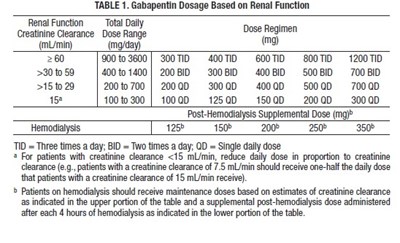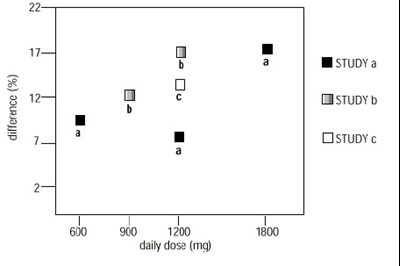Product Images Gabapentin
View Photos of Packaging, Labels & Appearance
- image - gabapentin usp 100 mg 1
- image - gabapentin usp 100 mg 10
- image - gabapentin usp 100 mg 11
- image - gabapentin usp 100 mg 12
- Image Description - gabapentin usp 100 mg 13
- image - gabapentin usp 100 mg 2
- image - gabapentin usp 100 mg 3
- image - gabapentin usp 100 mg 4
- image - gabapentin usp 100 mg 5
- image - gabapentin usp 100 mg 6
- image - gabapentin usp 100 mg 7
- image - gabapentin usp 100 mg 8
- image - gabapentin usp 100 mg 9
Product Label Images
The following 13 images provide visual information about the product associated with Gabapentin NDC 53217-241 by Aidarex Pharmaceuticals Llc, such as packaging, labeling, and the appearance of the drug itself. This resource could be helpful for medical professionals, pharmacists, and patients seeking to verify medication information and ensure they have the correct product.
image - gabapentin usp 100 mg 1

This text provides a table indicating the appropriate dosage of Gabapentin based on a patient's renal function, specifically their creatinine clearance. The table shows the daily dose range and regimen for various levels of creatinine clearance. It also provides instructions for post-hemodialysis supplemental doses and advises on dosage adjustments for patients with creatinine clearance under 15 mL/min. The table includes abbreviations for dosing frequency: TID for three times a day, BID for two times a day, and QD for a single daily dose.*
image - gabapentin usp 100 mg 11

The image shows the proportion of patients in controlled studies of PHN who experienced a reduction in pain score of over 50% at the endpoint. One of the studies had a proportion of responders of 34%. The text contains statistical values of p<0.001 and #4p<0.001. The remaining text, "GEP 3600 GBP 1800 GBP 2400", does not make sense in this context and may be a conversion rate or dosage information, but it is unclear without further context.*
Image Description - gabapentin usp 100 mg 13

This is a medication called Gabapentin, which is used to treat seizures and neuropathic pain. The packaging includes a warning not to dispense without a prescription, to keep out of reach of children, and to store at room temperature. Each capsule contains 100mg of Gabapentin and it is manufactured by Invagen Pharmaceuticals in Hauppauge, NY. The NDC number is 53217-0241-15.*
image - gabapentin usp 100 mg 2

This text is not clear, most likely because of errors. Therefore, the description cannot be generated accurately.*
image - gabapentin usp 100 mg 3

This text presents a table with risks associated with Indications for Antiepileptic Drugs in a pooled analysis. The indications include Epilepsy, Psychiatric, and Other. The table compares the incidence of events in placebo and drug patients, the relative risk, and the risk difference, expressed in number of patients per 1000.*
image - gabapentin usp 100 mg 4

This is a table showing the adverse reactions in pooled placebo-controlled trials in Postherpetic Neuralgia. The table includes the percentage of adverse reactions experienced by patients taking Gabapentin (N=336) and those taking a placebo (N=227). The adverse reactions are divided into different categories such as "Body as a Whole," "Digestive System," "Nervous System," and "Special Senses." Some examples of the adverse reactions listed for Gabapentin are Asthenia (6%), Diarrhea (6%), and Dizziness (8%). There are also a few adverse reactions listed for the placebo group for comparison.*
image - gabapentin usp 100 mg 5

This is a table showing adverse reactions observed in epilepsy patients over 12 years of age taking Gabapentin compared to placebo. Adverse reactions reported include fatigue, increased weight, back pain, peripheral edema, vasodilation, dyspepsia, dry mouth or throat, constipation, dental abnormalities, somnolence, dizziness, ataxia, nystagmus, tremor, dysarthria, amnesia, depression, abnormal thinking, abnormal coordination, pharyngitis, coughing, abrasions, impotence, diplopia, and blurred vision.*
image - gabapentin usp 100 mg 6

This is a table showing the adverse reactions observed in a randomized controlled trial involving pediatric epilepsy patients aged 3 to 12 years who were administered Gabapentin, compared to those given a placebo. The table shows the number and percentage of patients in each group who experienced adverse reactions such as body aches, viral infection, fever, increased weight, fatigue, nausea, vomiting, somnolence, hostility, emotional lability, dizziness, hyperkinesia, bronchitis, or respiratory infection. However, there is no information on the efficacy of Gabapentin or the study design.*
image - gabapentin usp 100 mg 8

This is a table showing the details of two controlled studies on Postherpetic Neuralgia. The table includes the duration of the studies, dosages of Gabapentin administered in three divided doses per day, and the number of patients receiving Gabapentin and Placebo in each study. There were a total of 227 patients in both studies, with Gabapentin being received by 3% of the patients.*
* The product label images have been analyzed using a combination of traditional computing and machine learning techniques. It should be noted that the descriptions provided may not be entirely accurate as they are experimental in nature. Use the information in this page at your own discretion and risk.



